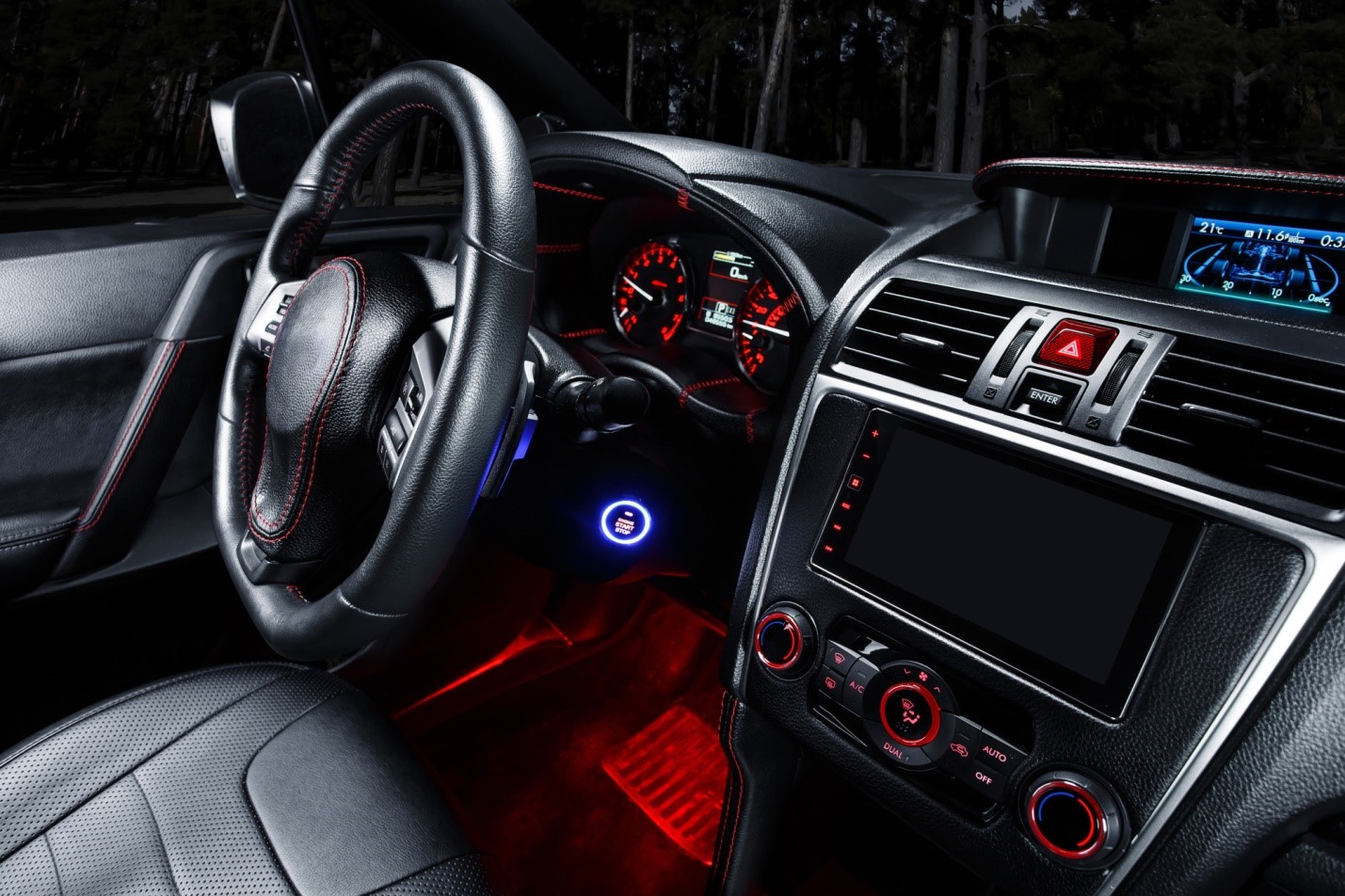With the trend of increased adoption of consumer electronics in the automotive industry, the design of the center console is undergoing a major shift. This article covers some of the emerging trends which are finding increasing adoption in the center console. These technologies not only provide a seamless human machine interface for when the passenger uses a cell phone or the car navigation unit, but also enable automobile manufacturers to save money, improve reliability, and create a shift in the aesthetics of the car.
With greater emphasis being placed on the user experience and an increased need for design differentiation, automotive human machine interface (HMI) has gone through a paradigm shift and is taking the user experience to a whole new level. The center console, located in the center of the front interior of an automobile, has a display and control switches for Infotainment, HVAC, communication modules, and other functions. It is an essential component of an automobile interior as it consolidates access to these systems and provides the user with all the relevant information required for an enhanced and controlled driving experience.
Traditionally center consoles have been a stack-up of Infotainment and HVAC modules with mechanical control switches on relatively flat plastic overlay. These modules work independently of each other, have different design formats, and utilize separate communication channels. To implement this architecture, there are dedicated companies supporting car manufacturers for one or more of these modules. Consumers also have the option of buying these modules separately from aftermarket distributors.
The emerging center console
With the availability of advanced technologies coupled with increased focus on the human machine interface aspect of center console design, a change is being ushered into the design model of center consoles. Technologies prevalent in the consumer space are being adopted for the automotive environment and are enabling engineers and designers greater freedom in design of the console.
Capacitive Touch Sensing:
Put simply, a capacitive sensor is composed of a pair of adjacent electrodes. When a human being (or any other conductive object) comes in proximity to these electrodes, there is additional capacitance between the electrodes and the object which can be measured to detect the object's presence.
Using this technology, it is possible to build touch sensors acting as buttons, sliders, trackpads, etc. Alternately, capacitive sensing can also be used for proximity sensing where no contact is required between the sensor and the user's body. Such technology becomes even more powerful in conjunction with programmable mixed-signal controllers. These integrated devices enable the measurement of capacitance intelligently to detect human proximity across range, direction of approach, gesture recognition, etc. They also enable the possibility of integrating other functions like controlling motors and LEDs to provide feedback to the user based on touch / proximity.
Evolving ecosystem:
Such changes in design methodologies require a changing role amongst each member of the value chain. Car manufacturers traditionally have focused departments for each component of the center console that are responsible for the complete design of the component, including what will show on the front panel. However, the integrated design methodology requires that the user interface be directly handled by a collaborative team focused on HMI. Such changes enable greater focus on the actual HMI design.
Such technologies also require greater cooperation between semiconductor and other technology companies with car manufacturers to enable creation of suitable devices and technologies. Such collaboration is resulting in greater dynamism in the ecosystem and providing a platform for accelerated technology development.
Availability of advanced HMI technologies like capacitive sensing and capacitive touchscreens with support for standard automotive communication protocols are ushering in a change in the design of the center console of the car which is now moving towards an integrated front panel. Such panels provide a number of advantages including better styling, uniform look and feel of front panels, lower number of grooves and mechanical components, lower tooling costs, and increased reliability.
With semiconductor suppliers and technology companies working even more closely with car manufacturers such improvements in panel designs will continue to evolve and enable a superior driving experience.











